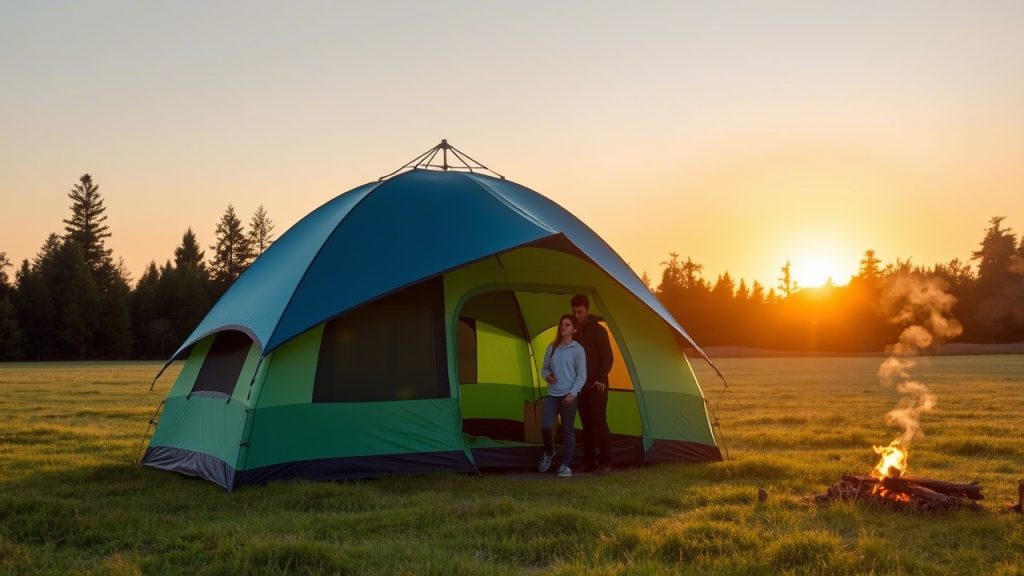Camping offers a unique opportunity to escape the hustle of daily life and immerse yourself in nature’s tranquility. However, achieving restful sleep in a tent can be challenging due to unfamiliar surroundings, hard ground, temperature fluctuations, and outdoor noises. A poor night’s sleep can leave you fatigued, irritable, and less equipped to enjoy activities like hiking or fishing. Fortunately, with the right tent setup and strategies, you can transform your campsite into a sleep-friendly oasis that rivals the comfort of your bedroom.
We present the 14 best tent ideas to improve sleep quality outdoors, combining innovative tent designs, essential accessories, and practical camping hacks. These ideas address common sleep disruptors—discomfort, temperature extremes, noise, light, and weather—while catering to solo backpackers, families, and casual campers alike. We’ve also included real-world scenarios, expert tips, and a comprehensive FAQ section to answer your questions about sleeping well in the wilderness. Let’s dive into how to make your tent a cozy, restorative retreat for your next outdoor adventure!
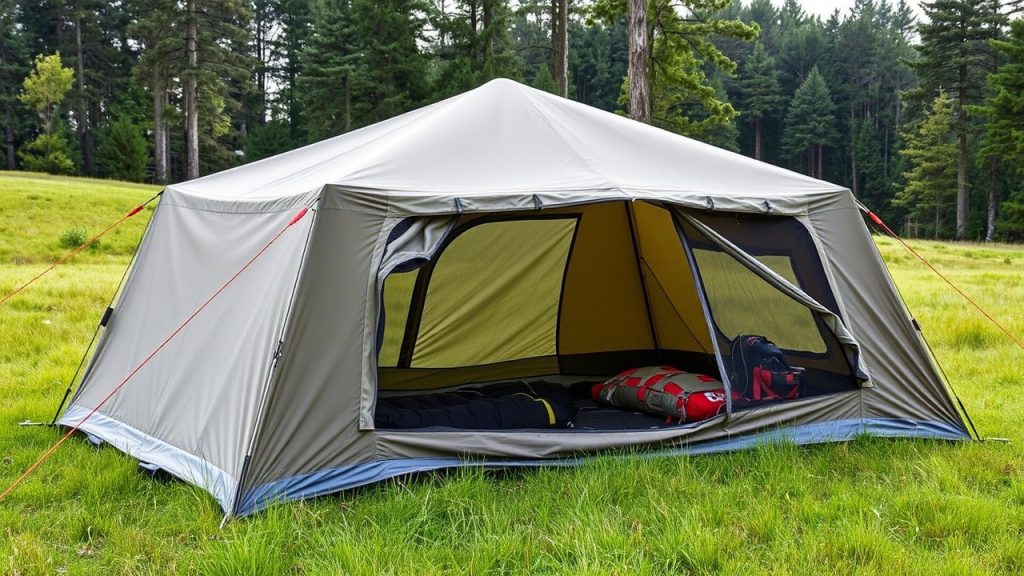
Why Sleep Quality Matters Outdoors
Quality sleep is the foundation of a successful camping trip. It replenishes your energy for physical activities, sharpens your focus for tasks like navigation, and enhances your mood for shared experiences with friends or family. Poor sleep, on the other hand, can lead to exhaustion, reduced decision-making ability, and even safety risks in rugged environments. Outdoor sleeping challenges include:
- Physical Discomfort: Hard, uneven ground or cramped spaces can cause back pain or restless tossing.
- Temperature Swings: Hot nights can feel stifling, while cold nights may leave you shivering.
- Noise Disturbances: Wind, wildlife, rustling leaves, or nearby campers can disrupt your rest.
- Light Exposure: Early sunrises, moonlight, or artificial lights can interfere with your sleep cycle.
- Weather Instability: Rain, wind, or humidity can make your tent feel insecure or damp.
- Psychological Factors: The unfamiliarity of sleeping outdoors can cause anxiety or difficulty relaxing.
A well-designed tent setup mitigates these issues by providing a comfortable, stable, and controlled environment. Our 14 ideas combine cutting-edge tent technology, proven gear, and time-tested camping strategies to ensure you wake up refreshed and ready to embrace the day.
14 Best Tent Ideas to Improve Sleep Quality Outdoors
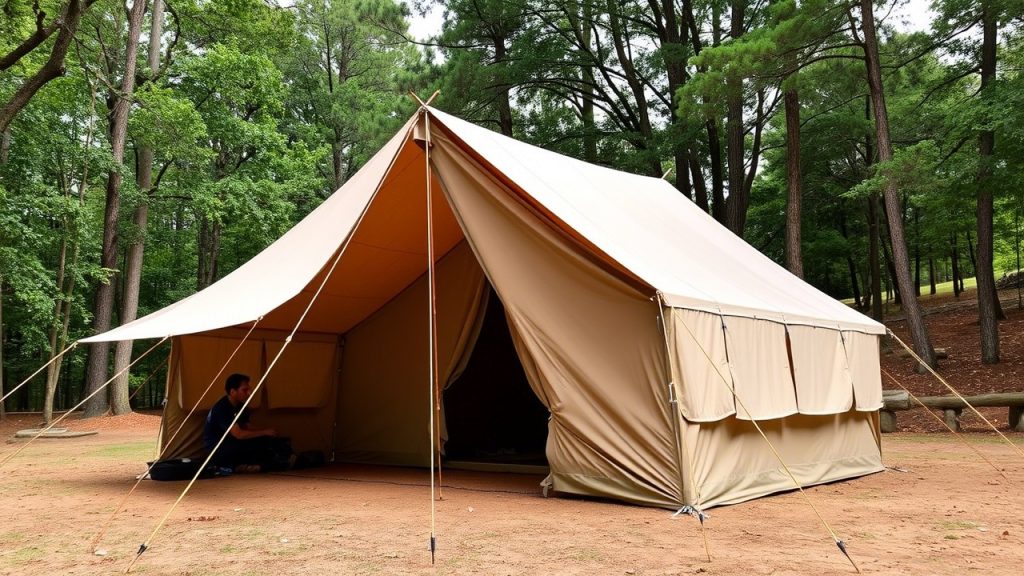
1. Spacious Cabin-Style Tents for Unrestricted Comfort
Cabin-style tents, like the REI Co-op Kingdom 6, feature near-vertical walls and peak heights up to 7 feet, offering a spacious interior that feels less confining than dome tents. This 6-person, 3-season tent provides 83.3 square feet of floor space, ideal for families or groups who value room to move.
Why It Improves Sleep: The tall, open design allows campers to sit up, change clothes, or adjust bedding without bumping into walls or ceilings. The extra space accommodates thick sleeping pads, cots, or inflatable mattresses, enhancing comfort. Room dividers create private sleeping zones, reducing disturbances from snoring or restless companions. For example, a family of four can designate one “room” for parents and another for kids, ensuring everyone sleeps undisturbed.
Real-World Example: During a week-long camping trip in Yosemite, a family reported that the Kingdom 6’s high ceiling and dividers made bedtime feel like a home routine, helping their kids fall asleep faster.
Pro Tip: Add a soft, machine-washable rug or interlocking foam tiles to the floor for a plush, cozy surface that mimics a bedroom. Ensure the rug fits within the tent’s footprint to avoid trapping moisture.
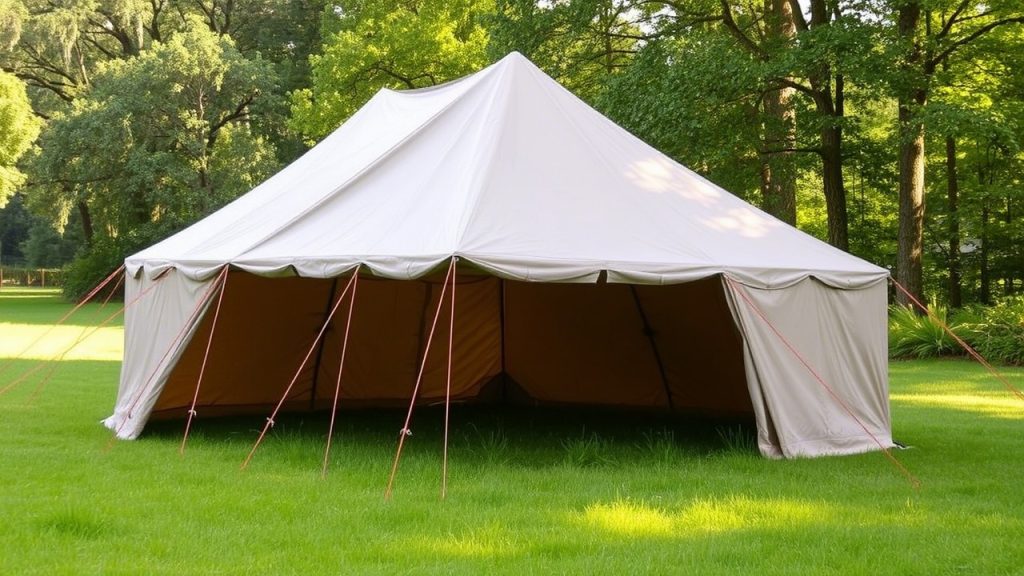
2. Double-Wall Tents for Optimal Temperature Regulation
Double-wall tents, like the Big Agnes Copper Spur HV UL3, use a breathable inner layer and a waterproof rainfly to manage temperature and condensation. This 3-person, 3-season tent weighs just 3 lbs 8 oz, making it a favorite for backpackers.
Why It Improves Sleep: The double-wall design creates an air buffer that insulates against heat and cold, maintaining a stable sleeping environment. Mesh panels promote airflow on warm nights, while the rainfly retains warmth in cooler conditions. By preventing condensation, the tent stays dry, avoiding the clammy feeling that can wake you up. For instance, campers in humid climates like Florida benefit from the Copper Spur’s ability to keep the interior fresh.
Real-World Example: A backpacker in the Appalachian Trail’s summer heat praised the Copper Spur for its breathable mesh, which kept the tent cool and dry despite high humidity.
Pro Tip: Adjust the rainfly’s vents or roll it back partially on clear nights to fine-tune airflow. In cold weather, keep the rainfly fully deployed to trap warmth.
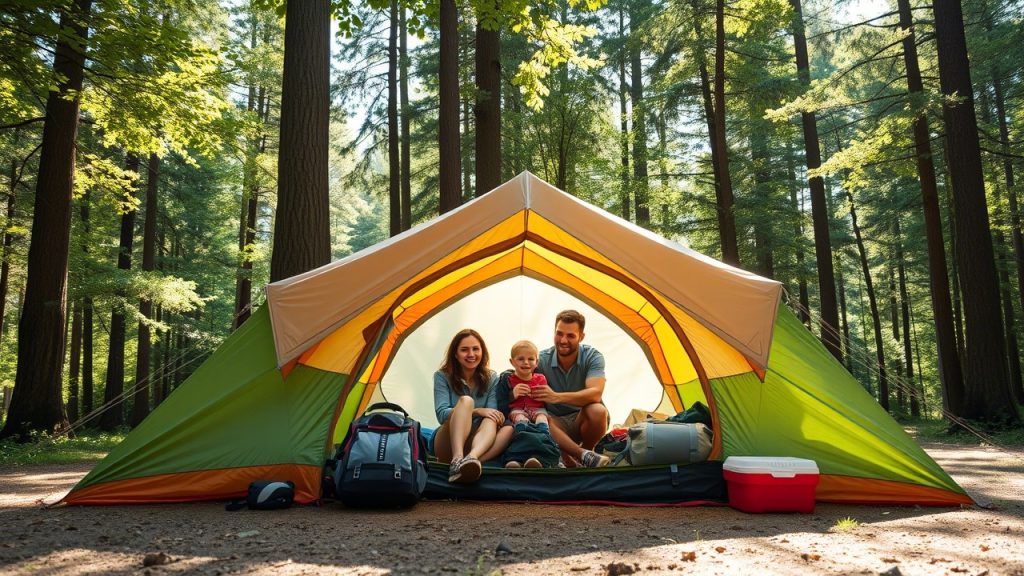
3. Darkroom Technology Tents for Light Blocking
Tents with Darkroom technology, like the Coleman Skydome Darkroom 4, block up to 90% of sunlight, creating a darker, cooler interior. This 4-person, 3-season tent is budget-friendly and sets up in under 5 minutes.
Why It Improves Sleep: Blocking early morning light or bright moonlight helps maintain your circadian rhythm, especially for those who sleep past sunrise or take daytime naps. The darker environment signals your brain to produce melatonin, promoting deeper sleep. The technology also reduces internal temperatures by reflecting sunlight, making it ideal for hot climates. Campers at festivals, where artificial lights are common, find this feature particularly helpful.
Real-World Example: A couple camping at Burning Man used the Skydome Darkroom to sleep through morning sunlight, reporting longer, more restful sleep despite the desert heat.
Pro Tip: Pair with blackout eye masks or a lightweight sleep mask for complete light elimination, especially in areas with frequent moonlight or nearby campfires.
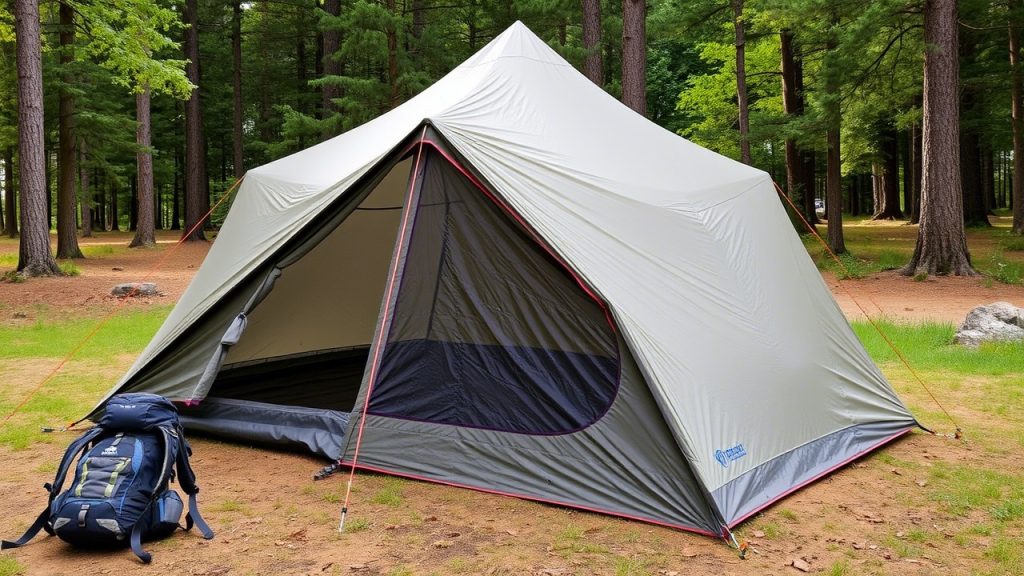
4. Insulated Canvas Tents for Noise and Temperature Control
Canvas tents, like the Kodiak Canvas Flex-Bow 6, use breathable cotton canvas to regulate temperature and dampen noise. This 6-person, 4-season tent offers 100 square feet of space and is built for durability.
Why It Improves Sleep: The thick canvas insulates against extreme heat and cold, maintaining a comfortable sleeping temperature. It also muffles external noises like wind, rain, or rustling leaves, creating a quieter environment. Unlike synthetic tents, which can flap loudly, canvas stays taut, reducing disruptive sounds. For example, campers in windy regions like the Great Plains appreciate the Flex-Bow’s sturdy, silent design.
Real-World Example: A family camping in Montana’s gusty prairies found the Kodiak Canvas quieter than their previous nylon tent, helping their toddler sleep through the night.
Pro Tip: Open mesh windows at night to balance airflow with insulation. Use a groundsheet to protect the canvas floor from moisture, ensuring a dry sleep space.
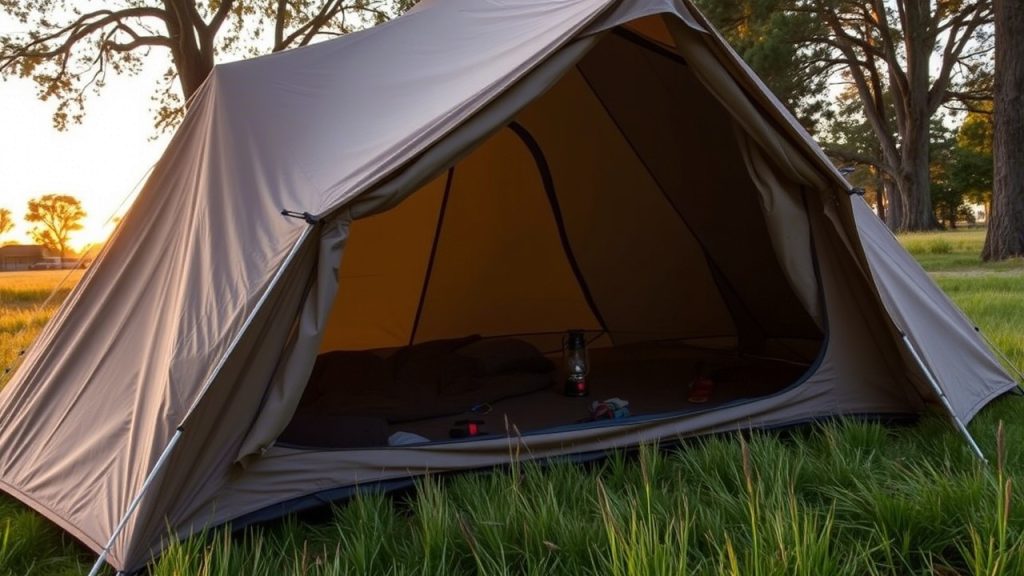
5. Elevated Tent Cots for Ground-Free Comfort
Tent cots, like the Kamp-Rite Oversize Tent Cot, combine a cot with a tent, elevating you 11 inches off the ground. This single-person, 3-season setup is ideal for solo campers or car campers with limited space.
Why It Improves Sleep: Elevation avoids hard, uneven terrain, reducing pressure points and back pain. The taut cot surface provides consistent support, unlike inflatable pads that may deflate. The under-cot space stores gear, keeping the sleeping area clutter-free and calming. Campers with joint pain or mobility issues find tent cots easier to enter and exit.
Real-World Example: An older camper in the Rockies used the Kamp-Rite cot to avoid rocky ground, reporting less morning stiffness and better sleep.
Pro Tip: Add a foam sleeping pad or thin mattress topper to the cot for extra cushioning. Secure gear under the cot with a tarp to keep it dry.
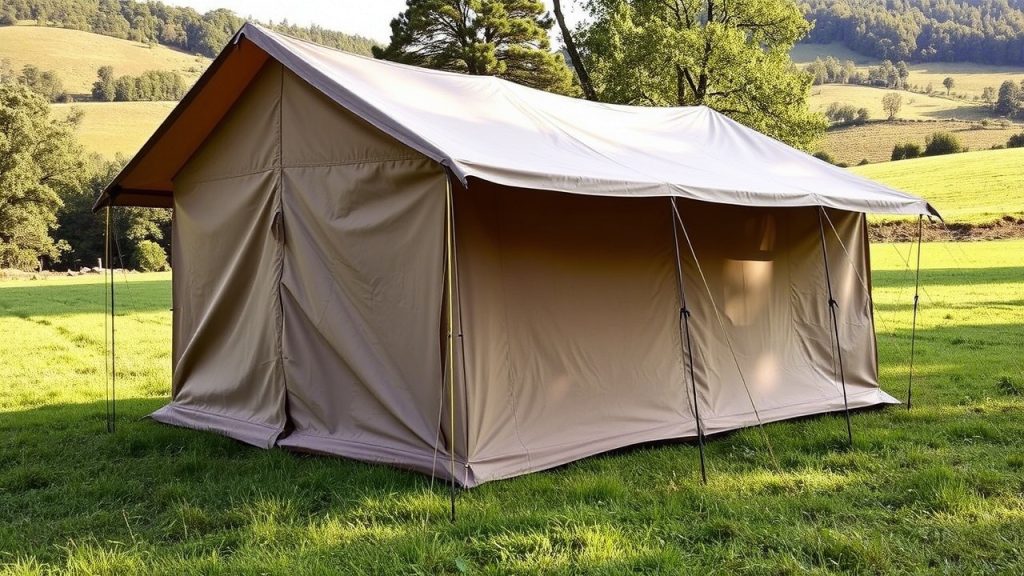
6. Hammock Tents for Soothing Motion
Hammock tents, like the ENO SkyLite, suspend you between trees, offering a gentle rocking motion that promotes relaxation. This solo, 3-season setup weighs 2 lbs 12 oz, perfect for backpackers in wooded areas.
Why It Improves Sleep: The rocking motion mimics a cradle, calming your nervous system and helping you fall asleep faster. Elevation avoids ground discomfort and improves airflow, ideal for hot, humid nights. The SkyLite’s bug net and rainfly provide protection without sacrificing breathability. Hammock camping is especially effective for those with insomnia or restless sleep patterns.
Real-World Example: A hiker in the Smoky Mountains found the SkyLite’s gentle sway helped them sleep through a humid night, unlike their ground tent.
Pro Tip: Use an underquilt or insulated pad for warmth in cooler weather. Practice hanging the hammock at home to find the perfect tension for comfort.
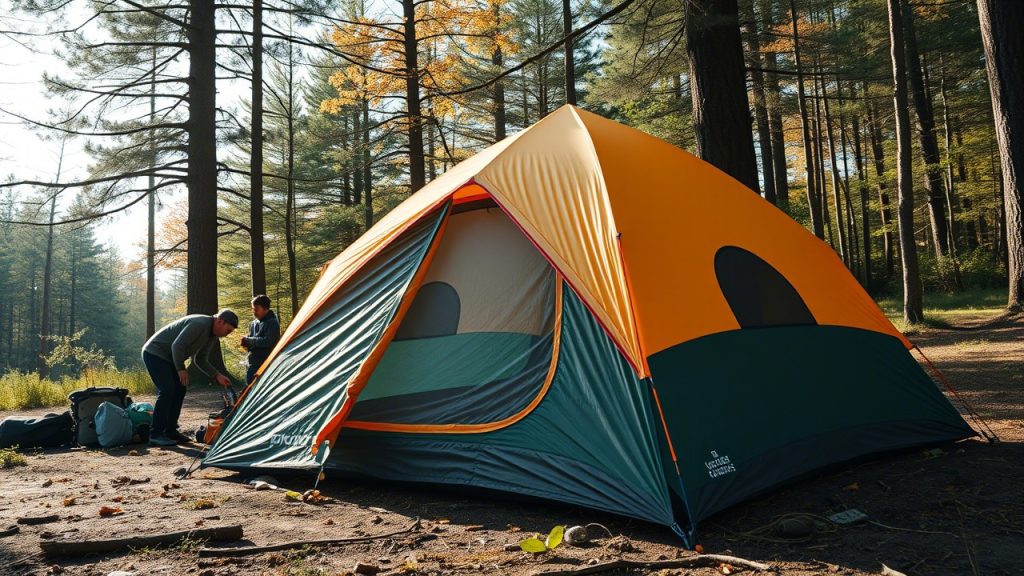
7. High-Quality Sleeping Pads for Superior Cushioning
A thick sleeping pad, like the Therm-a-Rest MondoKing 3D, offers 4.25 inches of cushioning and an R-value of 7 for insulation. This pad pairs well with any tent, enhancing comfort for all campers.
Why It Improves Sleep: The thick foam cushions hips, shoulders, and knees, reducing aches and allowing you to sleep in your preferred position. The high R-value insulates against cold ground, preventing chills that disrupt sleep. Its stable, non-slip surface ensures you stay in place all night. For side sleepers or those with back pain, this pad is a game-changer.
Real-World Example: A camper in Yellowstone used the MondoKing during a chilly fall trip, reporting no back pain and warmer sleep compared to thinner pads.
Pro Tip: Choose a pad 25 inches or wider to avoid slipping off. Inflate slightly softer for a plusher feel, but ensure it supports your spine.
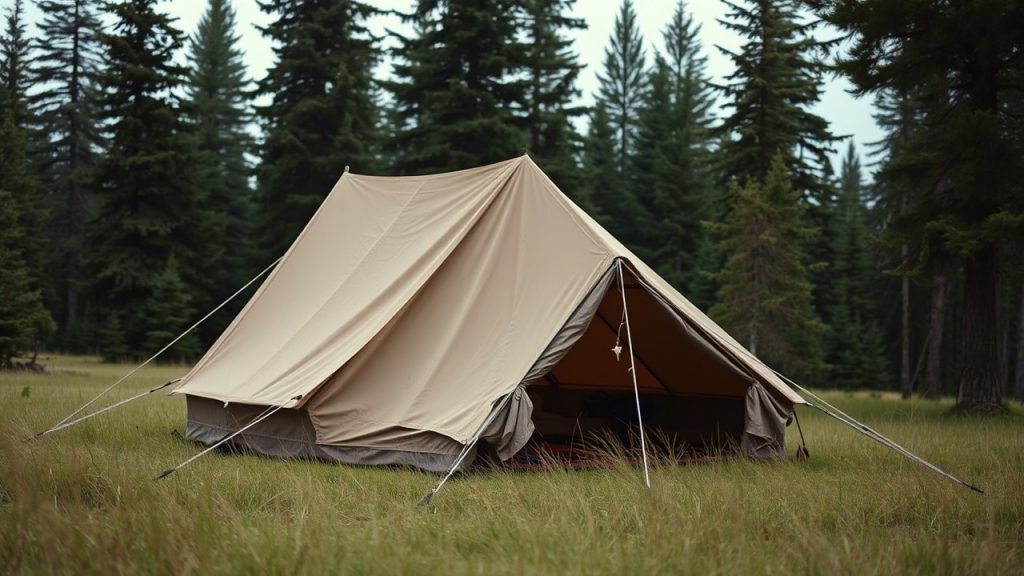
8. Strategic Tent Placement for Noise Reduction
Choosing the right campsite and tent orientation, using a versatile tent like the MSR Hubba Hubba NX 2, minimizes noise from wind, water, or human activity. This 2-person, 3-season tent is lightweight at 3 lbs 12 oz.
Why It Improves Sleep: Pitching behind natural barriers like trees, boulders, or hills blocks wind and muffles sounds from streams or trails. Orienting the tent’s entrance away from prevailing winds reduces flapping noises. Avoiding busy campsites or party zones ensures a quieter night. This strategy is critical in popular areas like national parks.
Real-World Example: A backpacker in Zion National Park pitched the Hubba Hubba behind a rock formation, avoiding wind noise and sleeping soundly despite nearby hikers.
Pro Tip: Bring soft foam earplugs or use a white noise app to mask unavoidable sounds. Test your tent’s stakes and guylines for stability in windy conditions.
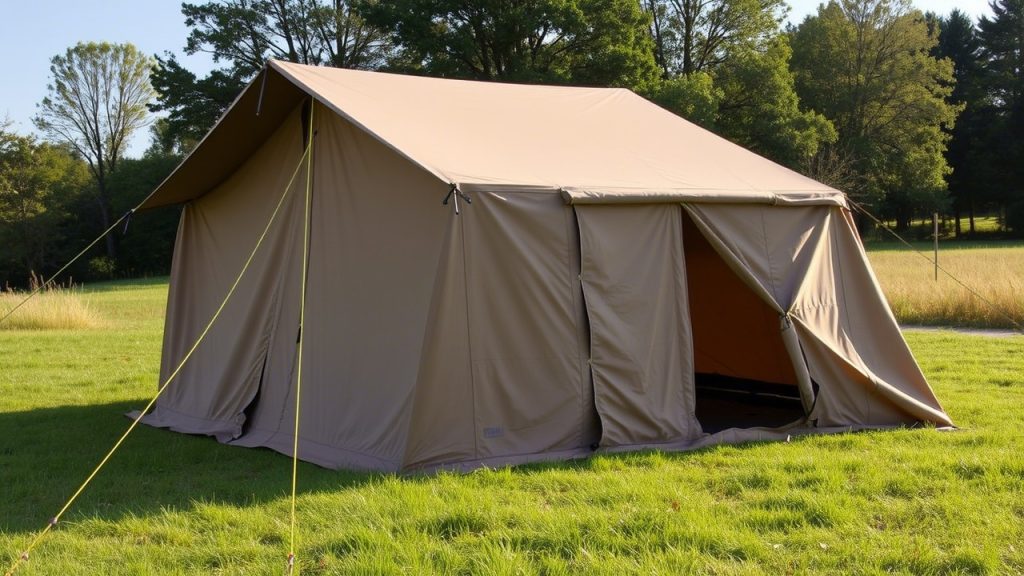
9. Blackout Curtains or Tarps for Enhanced Privacy
Hanging blackout curtains or a dark tarp inside your tent, compatible with models like the Eureka Copper Canyon LX 8, creates a dark, private sleep environment. This 8-person, 3-season tent has ample interior loops.
Why It Improves Sleep: Blocking external light—whether from sunrise, moonlight, or campfires—helps regulate your sleep cycle and promotes melatonin production. Curtains also add privacy, reducing visual distractions and creating a cozy, cave-like atmosphere. This is especially useful for light-sensitive sleepers or families with young children.
Real-World Example: A parent camping in Acadia used blackout curtains in the Copper Canyon to create a dark nap space for their toddler, improving everyone’s sleep.
Pro Tip: Use breathable, lightweight fabric to avoid trapping heat. Secure curtains with carabiners or clips for easy removal during the day.
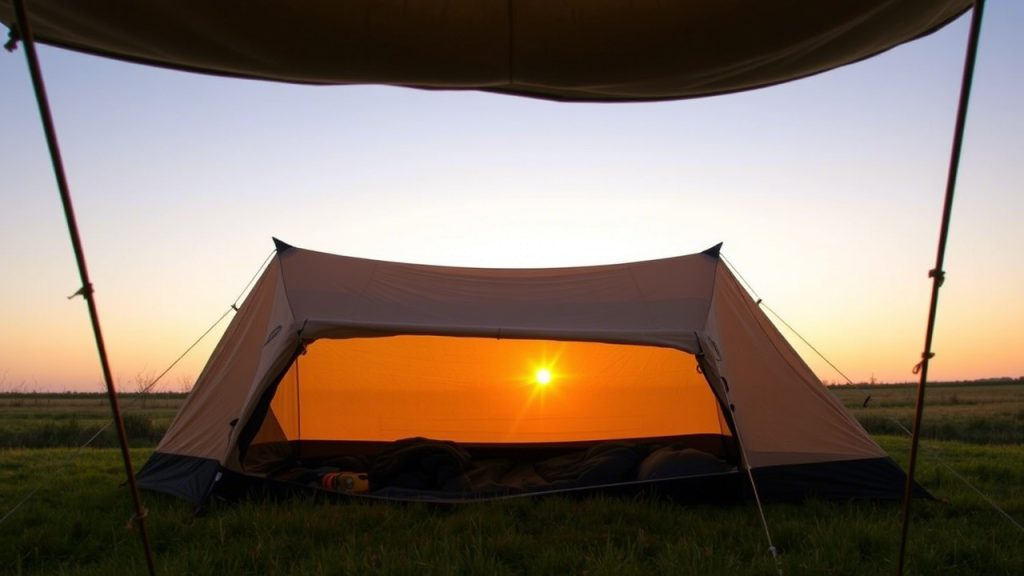
10. Ventilation-Focused Tents for Hot Climates
Mesh-heavy tents, like the Sea to Summit Telos TR2, prioritize airflow with full mesh walls and an adjustable rainfly. This 2-person, 2-season tent weighs 3 lbs 10 oz, ideal for warm weather.
Why It Improves Sleep: Extensive mesh prevents stuffiness, keeping you cool on hot, humid nights. The adjustable rainfly allows you to maximize airflow on clear nights or seal up during rain, maintaining a dry, comfortable interior. Good ventilation also reduces condensation, avoiding damp bedding that can wake you up.
Real-World Example: A couple camping in the Everglades used the Telos TR2’s mesh walls to stay cool, sleeping comfortably despite 80°F nights.
Pro Tip: Roll back the rainfly completely on clear, starry nights for a breezy, open-air feel. Ensure bug netting is intact to keep insects out.
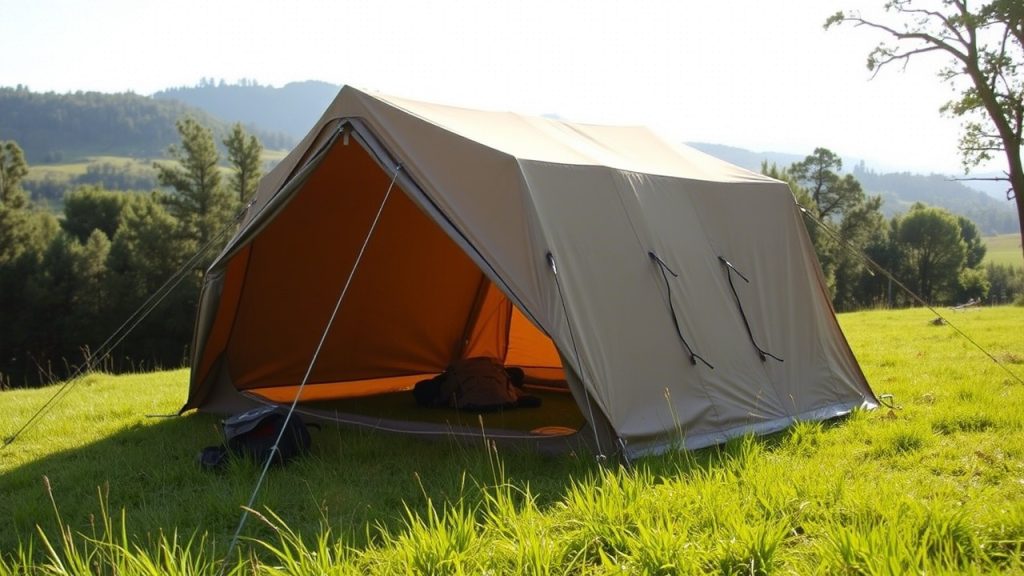
11. Inflatable Mattresses for Bed-Like Comfort
An inflatable mattress, like the SoundAsleep Dream Series Air Mattress, brings home-like comfort to spacious tents like the CORE 9-Person Instant Cabin Tent. This queen-size mattress fits car camping setups.
Why It Improves Sleep: The thick, supportive surface mimics a traditional bed, aligning your spine and reducing pressure points. Adjustable firmness lets you customize comfort, ideal for couples with different preferences. The raised design keeps you off the cold ground, improving warmth in cooler weather.
Real-World Example: A family in Joshua Tree used the SoundAsleep mattress in their CORE tent, reporting sleep quality comparable to their home bed.
Pro Tip: Use a battery-powered pump for quick inflation and pack a repair kit for punctures. Place a fitted sheet over the mattress for a familiar feel.
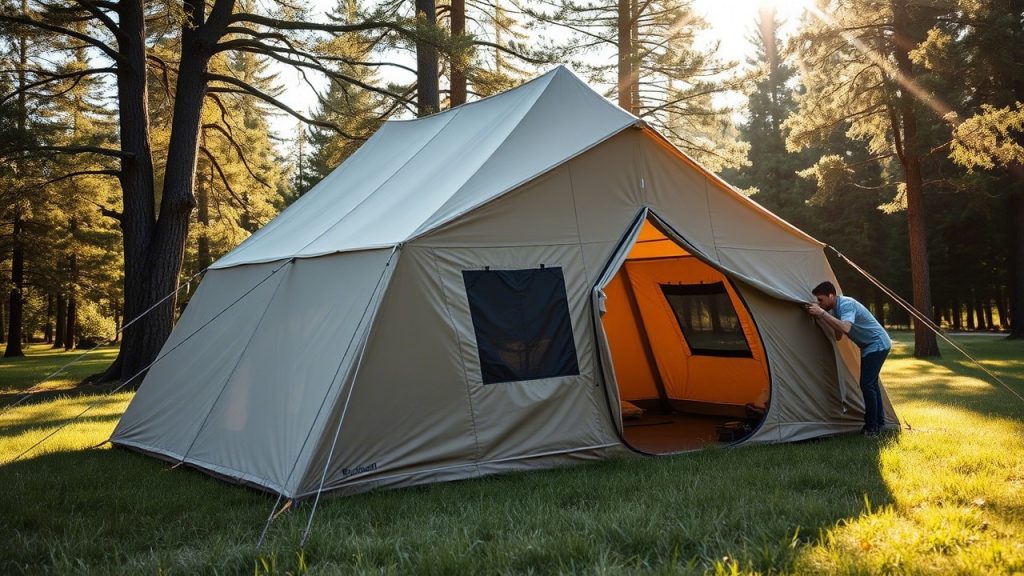
12. Tent Organizers for a Calm, Clutter-Free Space
Hanging organizers or gear lofts, like the REI Co-op Tent Organizer, keep essentials off the floor in tents like the Marmot Limestone 4P, which has multiple attachment points.
Why It Improves Sleep: A clutter-free tent reduces stress and creates a serene environment conducive to rest. Organized gear—headlamps, phones, or water bottles—stays within reach without rolling under you. This setup prevents nighttime disruptions from shifting items or searching in the dark.
Real-World Example: A group in the Adirondacks used the Marmot’s gear loft to store noisy items, avoiding disturbances and sleeping more peacefully.
Pro Tip: Store hard or noisy items (e.g., keys, multitools) in soft pouches to prevent clattering. Assign specific pockets for quick access to essentials.

13. Weatherproof Tents for Stress-Free Rest
Weatherproof tents, like the The North Face Wawona 6, feature robust rainflies and high hydrostatic head ratings (1200mm rainfly, 1500mm floor) to protect against storms. This 6-person, 3-season tent is built for reliability.
Why It Improves Sleep: Knowing your tent can withstand rain, wind, or sudden weather changes reduces anxiety, allowing you to relax fully. The sturdy dome design minimizes flapping, and sealed seams prevent leaks, ensuring a dry, secure sleep space. This is crucial in unpredictable climates like the Pacific Northwest.
Real-World Example: Campers in Oregon’s rainy coast used the Wawona 6 during a storm, sleeping soundly without worrying about leaks or wind.
Pro Tip: Tighten guylines and stake the rainfly securely to prevent movement. Use a footprint to protect the floor from pooling water.
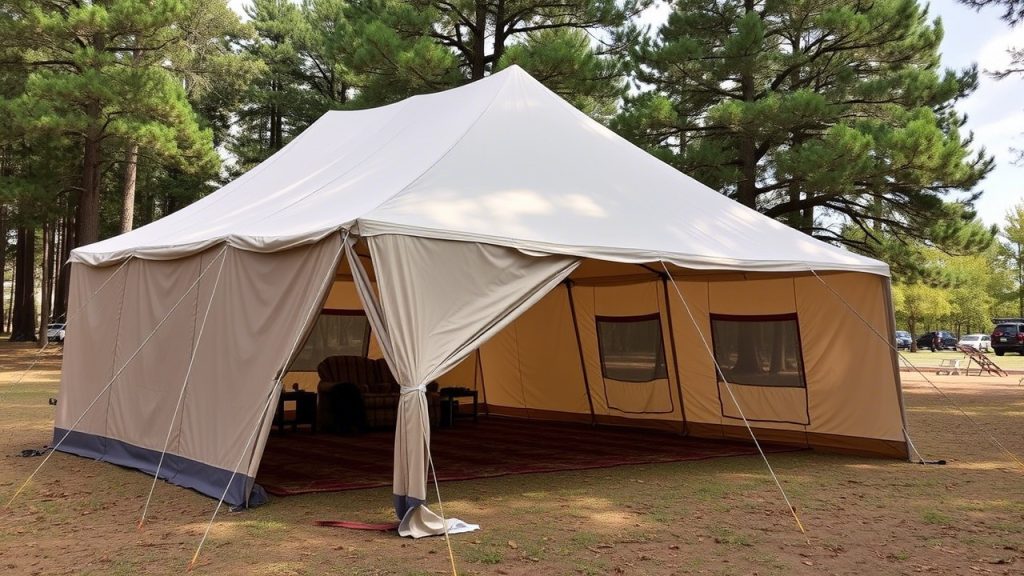
14. Portable Fans for Air Circulation and White Noise
A battery-powered fan, like the OPOLAR Rechargeable Camping Fan, clips to the ceiling of tents like the Nemo Aurora Highrise 6, enhancing airflow and providing gentle noise.
Why It Improves Sleep: Fans circulate air, cooling you on hot nights and reducing stuffiness. The soft hum acts as white noise, masking disruptive sounds like wind or wildlife. Rechargeable models with adjustable speeds offer versatility for different conditions, making them a lightweight sleep aid.
Real-World Example: A camper in Arizona used the OPOLAR fan in the Aurora Highrise, staying cool and sleeping through coyote howls thanks to the fan’s hum.
Pro Tip: Position the fan near a mesh panel for optimal air intake. Recharge it during the day using a portable solar charger for extended trips.
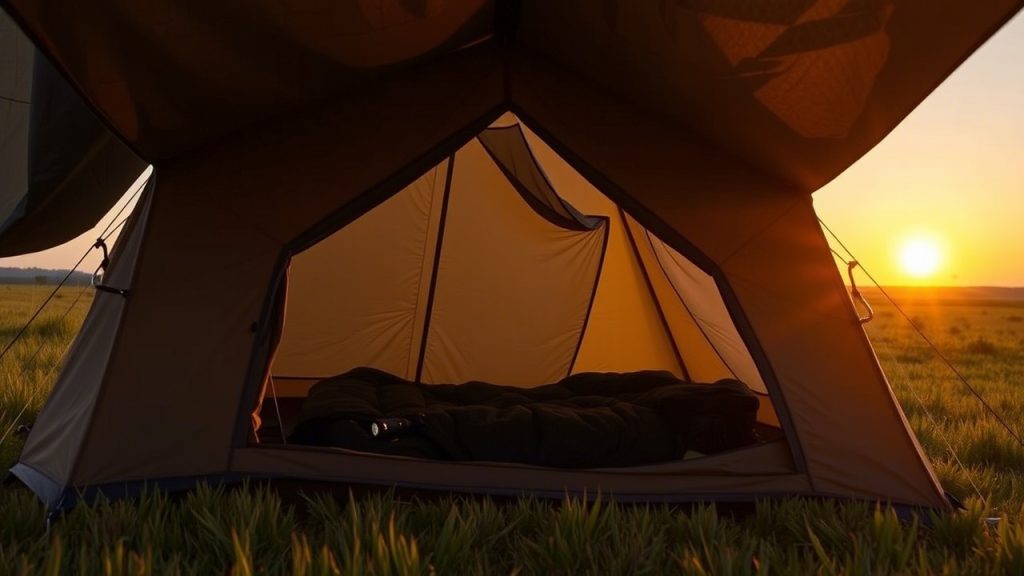
Additional Tips for Better Sleep Outdoors
To maximize these tent ideas and ensure restful sleep, incorporate these expert strategies:
- Establish a Bedtime Routine: Mimic your home routine—brush your teeth, read, or listen to calming music—to signal your body it’s time to sleep.
- Choose a Flat, Soft Campsite: Scout for level ground free of rocks or roots. Clear debris and test the site by lying down before pitching.
- Layer Bedding for Versatility: Combine a sleeping pad, mattress, or cot with blankets or a sleeping bag for adjustable warmth. Peel back layers if you overheat.
- Block Light Proactively: Set up blackout curtains or tarps before sunset to prepare your sleep environment. Keep a headlamp with a red-light mode for nighttime use.
- Time Hydration: Drink water throughout the day but taper off 2 hours before bed to reduce bathroom trips. Keep a small bottle nearby for sips.
- Incorporate Comfort Items: Bring a travel pillow, weighted blanket (for car camping), or essential oils like lavender to create a familiar sleep vibe.
- Test Your Setup: Practice pitching your tent and arranging your sleep system at home to identify and fix issues before your trip.
- Keep Gear Dry and Organized: Store wet gear in vestibules or dry bags to maintain a dry, tidy sleep space. Use compression sacks for compact storage.
- Wind Down Naturally: Avoid screens 1 hour before bed, as blue light suppresses melatonin. Try journaling, stretching, or stargazing to relax.
- Pack Sleep Aids Sparingly: Use melatonin supplements or herbal teas only if needed, and consult a doctor for safe outdoor use.
Frequently Asked Questions
1. What features make a tent ideal for sleep quality?
A sleep-friendly tent offers ample space, effective ventilation, temperature regulation, light-blocking capabilities, and weather resistance. Look for high peak heights, mesh panels, robust rainflies, and compatibility with thick pads, cots, or mattresses.
2. How can I stay comfortable on rocky or uneven ground?
Use a thick sleeping pad (R-value 4+), inflatable mattress, or tent cot to cushion against uneven terrain. Clear the campsite of debris and consider a footprint to smooth the surface.
3. Are canvas tents better for sleep than synthetic ones?
Canvas tents, like the Kodiak Flex-Bow, excel at temperature regulation and noise reduction due to their thick, breathable fabric. They’re heavier, so synthetic tents are better for backpacking where weight matters.
4. How do I block light in a tent without Darkroom technology?
Hang lightweight blackout curtains, a dark tarp, or breathable fabric inside the tent using clips or carabiners. Sleep masks or bandanas over the eyes are portable alternatives.
5. Does ventilation affect sleep in cold weather?
Yes, ventilation prevents condensation, keeping the tent dry and comfortable. Double-wall tents with adjustable vents balance airflow and warmth, ensuring a cozy sleep environment.
6. What’s the best tent size for comfortable sleep?
Choose a tent rated for one more person than your group (e.g., a 4-person tent for 3 people) to provide space for gear and movement. Spacious interiors reduce claustrophobia and improve rest.
7. How can I reduce noise in my tent?
Pitch behind natural barriers like trees or rocks, use a canvas tent for sound dampening, and bring earplugs or a white noise device. Secure guylines to prevent rainfly flapping.
8. Are inflatable mattresses practical for camping?
Inflatable mattresses offer bed-like comfort for car campers, improving sleep quality. They’re less practical for backpacking due to weight and setup time, where sleeping pads are better.
9. How do I maintain my tent for consistent sleep quality?
Clean and dry the tent after each trip to prevent mold, which affects air quality. Store it loosely to preserve fabric elasticity, and inspect poles, zippers, and seams for damage before use.
Conclusion
Sleeping well outdoors is not only possible but transformative, turning your camping trip into a rejuvenating escape. The REI Co-op Kingdom 6 offers spacious luxury for families, while the Big Agnes Copper Spur HV UL3 is a lightweight haven for backpackers. Budget campers can rely on the Coleman Skydome Darkroom 4 for light-blocking, and the Kodiak Canvas Flex-Bow 6 excels in noise and temperature control. Accessories like the Therm-a-Rest MondoKing 3D pad, Kamp-Rite Tent Cot, ENO SkyLite hammock, and OPOLAR Camping Fan elevate comfort to new heights.
By pairing these 14 ideas with strategic camping practices—choosing a flat site, establishing a routine, and staying organized—you can create a sleep environment that rivals your bedroom. Ready to rest deeply under the stars? Select your favorite tent ideas, pack your coziest gear, and embark on an outdoor adventure that leaves you refreshed, energized, and ready for the next day’s exploration!

